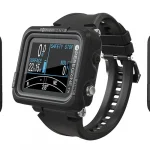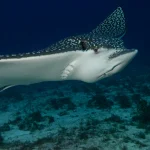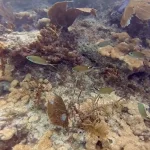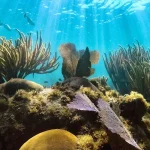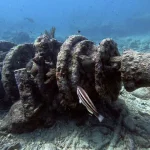Table of Contents
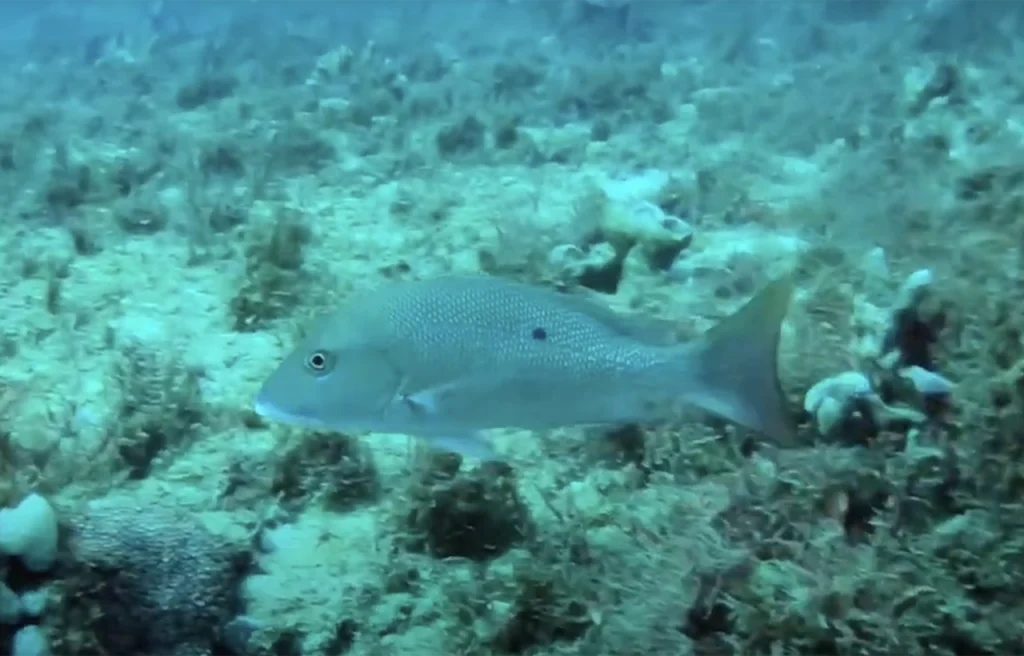
Larsen’s Valley is popular among both novice and experienced divers. The site offers opportunities for observing unique marine behaviors, such as cleaner shrimp interacting with divers.
Article at a Glance
- Location: Situated off the coast of Palm Beach, Florida, Larsen’s Valley is a popular dive site known for its unique underwater geography.
- Depth: The site features depths ranging from 70 to 90 feet, making it suitable for intermediate and advanced divers.
- Visibility: Divers can typically expect visibility between 40 to 60 feet, with optimal conditions reaching up to 100 feet on clear days.
- Marine Life: The area is rich in biodiversity, offering encounters with tropical fish, sea turtles, Goliath groupers, nurse sharks, and various mollusks.
- Best Dive Times: The ideal time to dive is 30 minutes before and after high tide, ensuring better visibility and calmer currents.
- Photography Opportunities: Larsen’s Valley provides excellent conditions for underwater photography, including wide-angle and macro shots of marine life and coral formations.
- Suitability: While the site offers exciting experiences for advanced divers, it is not recommended for beginners due to its depth and potential current conditions.
Larsens Valley Palm Beach
Location and Depth
Larsen’s Valley is situated near the Palm Beach Inlet and typically ranges from 70 to 90 feet in depth, making it suitable for divers with varying levels of experience. The site features rolling hills and a sloping terrain rather than vertical walls, which provides a different diving experience compared to other nearby reefs.
Water Temperature and Visibility
The water temperature at Larsen’s Valley typically hovers around 77°F, even during winter months, making it a comfortable diving destination year-round. Visibility can vary but is often reported to be between 40-45 feet on average days, with clearer conditions possible during certain times of the year.
Current and Weather Considerations
The dive conditions can be influenced by currents, which may affect where divers are dropped in the water. Captains often adjust dive plans based on current strength to ensure safety and optimal experiences for divers.
What Marine Life Can I Expect To See?
- Tropical Fish: Schools of angelfish, butterflyfish, trumpetfish, grunts, snappers, and groupers are abundant. Angelfish, including queen and French varieties, can grow up to 24 inches long.
- Sea Turtles: Large sea turtles are a signature attraction in the area and are frequently spotted on the reefs.
- Sharks: Nurse sharks and other shark species inhabit the area year-round.
- Rays: Southern stingrays, eagle rays, and manta rays are common. Manta rays can reach sizes larger than an adult human.
- Goliath Groupers: These massive fish are often found near reef structures.
- Mollusks: Horse conchs, the largest mollusks in the region, can be seen along the reef.
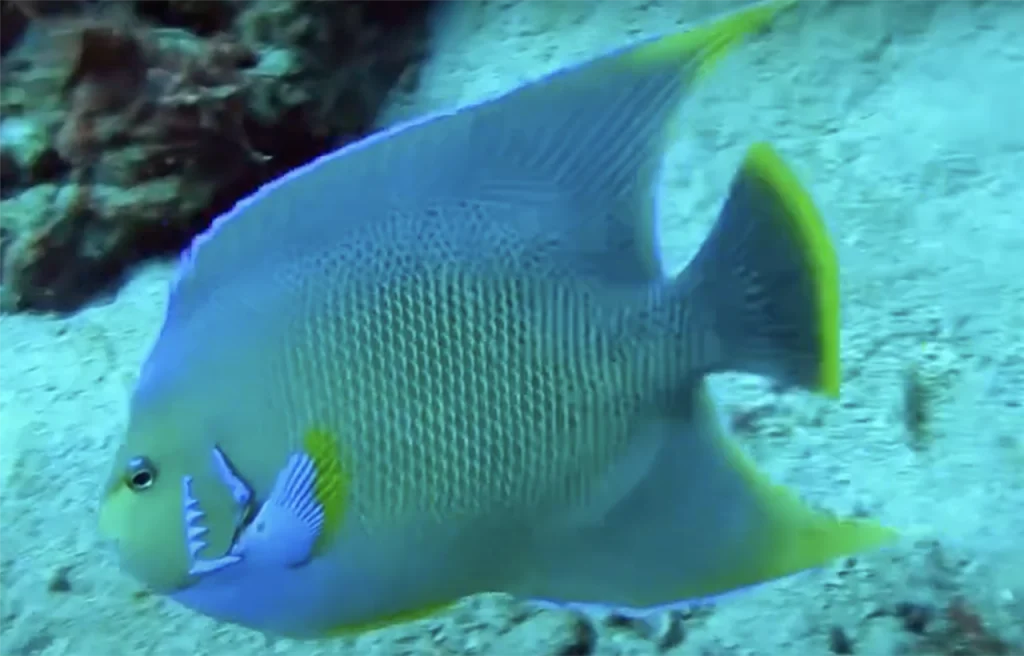
What Do Divers Say About This Site?
- Marine Diversity: Many divers report encountering a wide variety of marine species, including schools of tropical fish, sea turtles, and even the friendly Goliath grouper known as “Buddy.” One diver noted that Buddy was particularly engaging, swimming close to them throughout the dive, which enhanced their experience.
- Visibility and Conditions: Reviewers often mention favorable visibility, typically around 40-45 feet, and comfortable water temperatures averaging 77°F. These conditions contribute to enjoyable dives, even during winter months.
- Unique Geography: The site features a unique underwater landscape with hill-like formations that divers find appealing. This geography not only supports diverse marine life but also provides opportunities for shell collecting.
- Overall Experience: Divers appreciate the professionalism and helpfulness of dive operators in the area. Many have praised the dive masters for their guidance and support, making both novice and experienced divers feel comfortable.
Key Information
| Category | Details |
|---|---|
| Location | Palm Beach, Florida |
| Depth Range | 70 to 90 feet |
| Visibility | 40 to 60 feet (up to 100 feet on optimal days) |
| Suitability | Intermediate to advanced divers |
| Marine Life | Tropical fish, sea turtles, Goliath groupers, nurse sharks, horse conchs |
| Best Time to Dive | 30 minutes before and after high tide |
| Current Conditions | Generally manageable; check local conditions |
| Unique Features | Rolling hills, vibrant coral formations, opportunities for shell collecting |
| Photography Opportunities | Excellent for wide-angle and macro photography |
Highlights of Diving This Site?
- Abundant Marine Life: Divers frequently encounter schools of tropical fish, green moray eels, loggerhead sea turtles, and even a friendly Goliath grouper named “Buddy,” who often interacts with divers up close.
- Unique Finds: The site is known for rare discoveries like massive horse conchs, the largest mollusks in the area, which can grow up to two feet wide.
- Cleaner Shrimp Interaction: Scarlet cleaner shrimp sometimes engage with divers, offering a unique “manicure” experience.
- Good Diving Conditions: Visibility typically ranges from 40-45 feet, with comfortable water temperatures around 77°F, even in winter.
- Relaxed Current: The light north current makes it an enjoyable and safe dive for all levels of experience.
My Favorite Dive Computers
I have compared the 3 top diving computers for each category to help making the right choice easier:
Iconic Spots At This Site
- Rolling Hills Terrain: The site is known for its unique geography, featuring hill-like formations rather than steep walls. This “mountain meadow” terrain is home to diverse marine life and provides a picturesque underwater landscape.
- Marine Life Hotspots: Key areas within Larsen’s Valley host large angelfish, schools of tropical fish, green moray eels, and resting nurse sharks under ledges. The site is also famous for encounters with “Buddy,” a friendly Goliath grouper that often interacts with divers.
- Shell Collecting: Divers frequently find rare and massive horse conchs, the largest mollusks in the area, making it a great spot for those interested in unique underwater treasures.
- Proximity to Yellowtail Reef: On days with strong currents, divers can explore both Larsen’s Valley and Yellowtail Reef in a single drift dive, offering a “two-for-one” experience with even more marine diversity.
Environmental Conservation Efforts at Larsen’s Valley
- Conservation Partnerships: Palm Beach County has recently approved a resolution to protect over 31,000 acres of natural areas through partnerships with organizations like Conservation Florida. This initiative includes private conservation easements that restrict development and ensure sustainable management of these lands, which contribute to the overall health of local ecosystems, including marine environments (1)(3).
- Coastal and Marine Conservation: Specific projects in Palm Beach focus on restoring coastal ecosystems, such as the Lake Worth Lagoon, where efforts aim to improve water quality and restore seagrass beds that serve as critical habitats for marine life, including manatees and various fish species (2). Additionally, beach nourishment projects along Boca Raton’s coastline help combat erosion and protect sea turtle nesting sites (2).
- Coral Reef Restoration: The National Coral Reef Conservancy (ReeFLorida) is actively involved in coral restoration efforts along Florida’s Coral Reef, which impacts the marine life found at Larsen’s Valley. Their initiatives include establishing coral nurseries and removing non-native species to enhance the health of coral ecosystems (4).
- Public Awareness and Education: Organizations like The Reef Institute focus on educating the public about coral conservation and fostering stewardship through outreach programs. They engage local communities in conservation efforts, promoting awareness of the importance of protecting marine habitats (5).
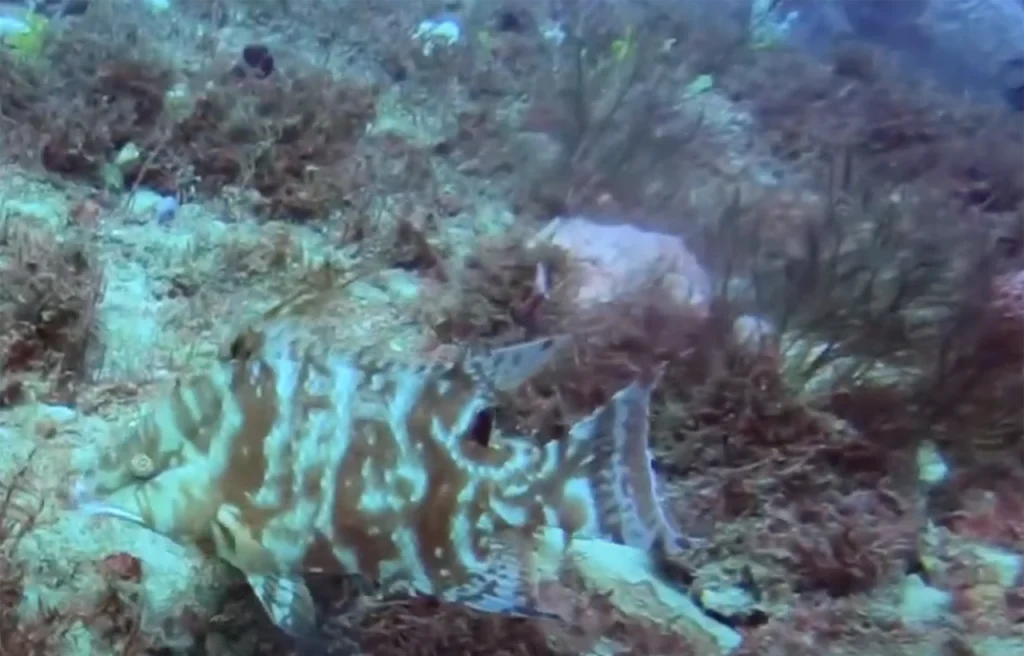
Maximizing Your Diving Experience at Larsen’s Valley
Optimal Timing
- Dive During Slack Tide: Aim to dive about 30 minutes before high tide for the best visibility and minimal current. This timing allows you to enjoy the clearest water and a more relaxed dive experience, as currents can be swift around the site.
- Check Local Conditions: Always check with local dive shops for tide charts and current conditions. They can provide insights on the best times to dive based on recent weather and water conditions.
Dive Planning
- Plan Your Route: Familiarize yourself with the site’s geography, which features rolling hills and various marine life hotspots. This will help you navigate effectively and maximize your exploration time.
- Use a Compass: While navigation is generally straightforward, using a compass can help you maintain orientation, especially if you decide to explore deeper areas or drift with the current.
Marine Life Encounters
- Look for Iconic Species: Be on the lookout for friendly marine life such as “Buddy,” the Goliath grouper, who is known for interacting with divers. Also, keep an eye out for green moray eels, loggerhead turtles, and schools of tropical fish.
- Explore Hidden Areas: Investigate under ledges and around rocky outcrops where smaller creatures may be hiding. Often, interesting marine life can be found in unexpected places, like inside discarded bottles or among debris.
Safety and Comfort
- Stay Hydrated and Rested: Ensure you are well-rested before diving. Staying hydrated is crucial, especially in warmer waters.
- Dive with a Buddy: Always dive with a partner for safety. This is especially important in areas that may become crowded during peak times.
Enjoying the Experience
- Take Your Time: Don’t rush through your dives. Spend time observing the marine life and taking in the underwater scenery. Diving is not just about seeing as much as possible but enjoying each moment underwater.
- Capture Memories: If you’re into underwater photography, bring a camera to document your encounters. Just be mindful of your surroundings to avoid disturbing marine life.
Capturing Memories at Larsen’s Valley: Photography Tips
Equipment and Settings
- Use a Wide-Angle Lens: A wide-angle lens is ideal for capturing the reef’s expansive hill-like geography and large marine species like Goliath groupers or sea turtles.
- Bring Artificial Light: Since colors diminish with depth, use strobes or focus lights to restore vibrancy and illuminate marine life. Proper strobe placement (e.g., at 10 and 2 o’clock positions) helps avoid backscatter (7).
- Adjust Camera Settings: For sharp images, use an aperture of around f/8–f/16, ISO between 200–400 in daylight, and a shutter speed fast enough to freeze motion. Experiment with exposure settings to balance light underwater.
Techniques
- Get Close: Minimize water between the lens and subject to reduce distortion and enhance clarity. This is especially effective for macro shots of smaller creatures like cleaner shrimp or mollusks.
- Split-Level Shots: For half-above, half-below water images, position the camera housing at the waterline and use Aperture Priority mode with a slightly increased exposure (+0.3–1.0) to balance lighting between the two perspectives.
- Experiment with Angles: Capture subjects from unique angles or incorporate the reef’s rolling terrain as a backdrop for dynamic compositions.
Timing and Conditions
- Dive During Slack Tide: This ensures better visibility (40–45 feet) and calmer currents, making it easier to frame your shots.
- Leverage Natural Light: Shoot during bright daylight hours to maximize ambient light penetration. Face away from the sun to avoid overexposure or harsh shadows (6).
Ethical Considerations
- Avoid Disturbing Marine Life: Be mindful of your surroundings, ensuring you don’t touch or stress animals like sea turtles or Goliath groupers.
- Respect Conservation Rules: Do not collect live shells or disturb habitats while photographing.
Frequently Asked Questions
When is the best time to dive Larsen’s Valley?
The best time to dive at Larsen’s Valley in Palm Beach is 30 minutes before and after high tide. This timing ensures optimal visibility and minimal currents, making for a safer and more enjoyable dive experience. Local dive shops often provide tide charts for the Port of West Palm Beach to help plan dives effectively.
What is the visibility like while diving Larsen’s Valley?
Visibility while diving at Larsen’s Valley typically ranges from 40 to 60 feet, depending on the conditions. On many occasions, divers have reported visibility of 40-45 feet during winter months, while some days can offer even better conditions, reaching up to 100 feetin optimal circumstances due to the warm, clear waters brought by the Gulf Stream.
How deep are the dives at Larsen’s Valley?
Dives at Larsen’s Valley in Palm Beach typically range from 70 to 90 feet in depth. This makes it a mid-range dive site suitable for both intermediate and advanced divers, offering plenty of opportunities to explore its unique hill-like underwater terrain and vibrant marine life.
Is Larsen’s Valley suitable for beginners?
Larsen’s Valley is not ideal for beginners due to its depth, which ranges from 70 to 90 feet. Open Water Diver certifications typically limit divers to a maximum depth of 60 feetfor safety reasons.
Additionally, while the site features manageable currents and good visibility (40–45 feet), the depth and potential for stronger currents at times make it more suitable for intermediate or advanced divers with some experience in deeper waters.
Beginners may want to start with shallower dive sites in the Palm Beach area before attempting Larsen’s Valley.
Is Larsen’s Valley suitable for advanced divers?
Yes, Larsen’s Valley is suitable for advanced divers. The dive site offers a unique underwater landscape with depths ranging from 70 to 90 feet, making it ideal for those with more experience.
Advanced divers can appreciate the diverse marine life, including friendly encounters with Goliath groupers and the opportunity to explore the site’s rolling hills and various marine habitats.
The conditions at Larsen’s Valley, such as visibility typically between 40 to 60 feet and manageable currents, further enhance the diving experience for advanced divers looking to enjoy deeper dives and engage with the vibrant ecosystem in this area of Palm Beach.
Palm Beach Diving Sites
- Blue Heron Bridge
- Breakers Reef
- Flower Gardens
- Juno Ledge
- King Neptune
- Northwest Double Ledges
- South Double Ledges
- Cable Crossing
- Breakers 3rd Window
- Rons Rock
- Ballentine Reef
- Worth Avenue Pier Debris
- Playpen or Playground
- Bath and Tennis
- North and South Turtle Mounds
- Shark Canyon
- Larsens Valley
- Hole in the Wall
Reference List
- (1) CONSERVATION FLORIDA AND PALM BEACH COUNTY TO EXPAND CONSERVATION PROTECTION
- (2) Palm Beaches and Treasure Coast
- (3) Palm Beach County works to prevent development of land following Great Outdoors Initiative
- (4) The National Coral Reef Conservancy (ReeFLorida) at Frost Science
- (5) Dedicated to coral conservation through education, research, and restoration.
- (6) How to photograph coral reefscapes
- (7) Underwater Tips for photographing coral

